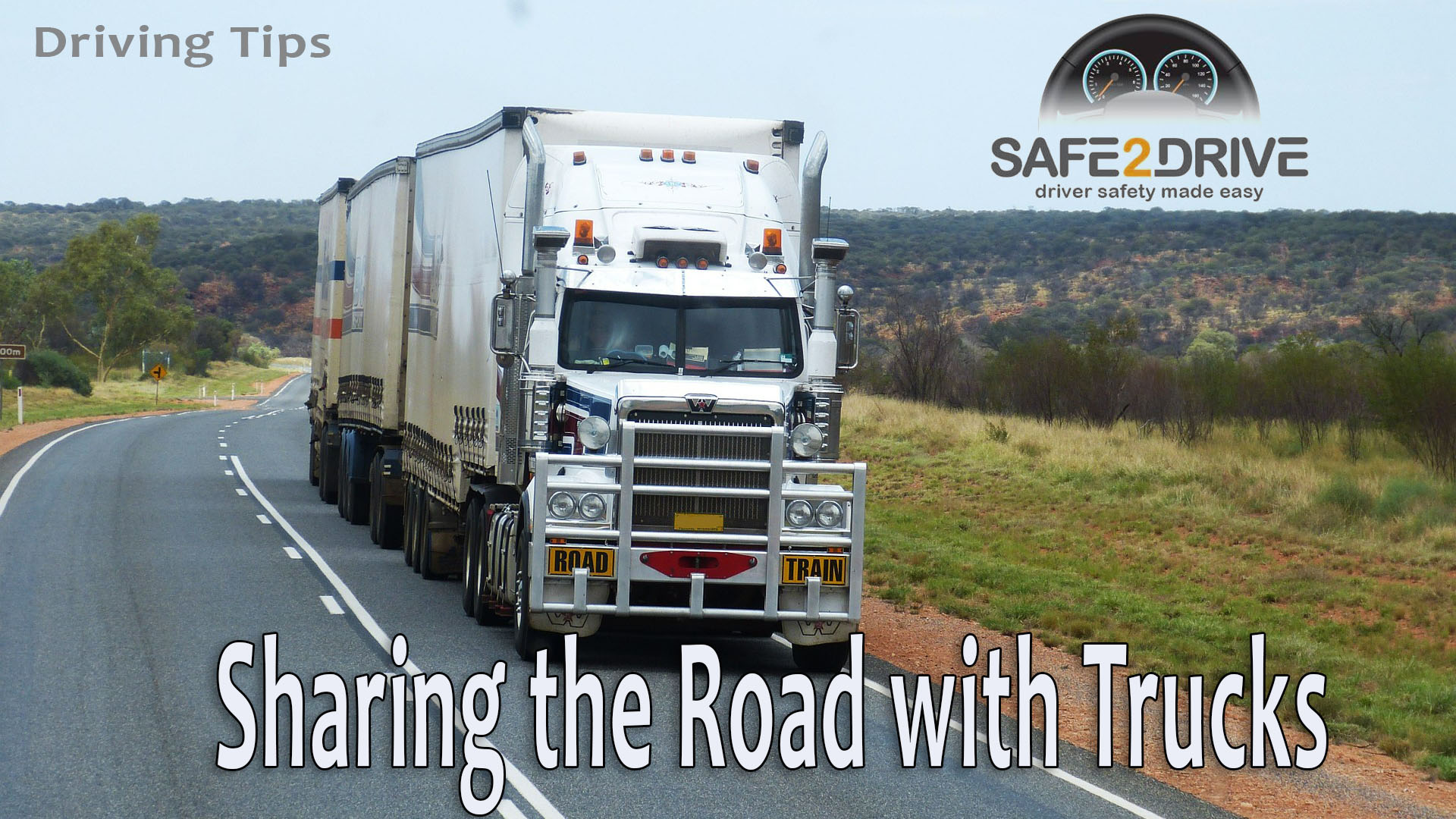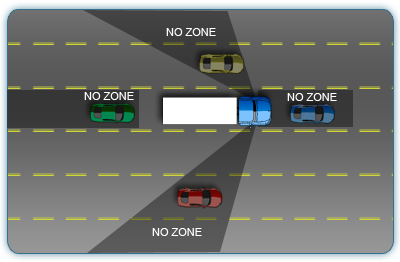
Sharing the Road with Trucks on Your Summer Vacation
As you head out for your summer vacation, you will be sharing the highways with a large number of big trucks. Large trucks play a critical role in the nation’s economy, providing safe, reliable transportation of goods and people over long distances. The numbers of trucks on the road have increased dramatically in the last few years. The need to safely share the road has never been greater. Follow these tips to keep you and your family safe on your driving vacation.
Avoid Blind Spots
If you can see a truck’s mirrors, the driver should be able to see you. But whether or not he or she does see you is another question. As a motorist, you should maneuver your vehicle into a position where a truck driver can see it. Remember, the driver might not see your vehicle in certain locations.
Every truck has four blind spots or "No-zones" that every motorist should avoid. Your vehicle is invisible in these no-zones.

- No- Zone 1: The first Zone is directly in front of the hood. Long hoods can create blind spots up to 20 feet in front of the bumper. That’s enough room for a car to move into without being seen. Traveling in this blind spot leaves the truck driver no room to stop or maneuver if the car suddenly swerves or brakes to avoid a hazard.
- No- Zone 2: Each side of a large truck also has a Blind Zone. On the driver’s side, the No Zone extends from the driver’s door to the middle of the trailer. Passenger cars should move through this zone steadily and not linger.
- No- Zone 3: The No Zone on the right side is much larger, stretching from the front of the truck all the way to the rear and three lanes over. If the truck driver has to make a wide right turn, a car in the right-side No Zone would be directly in its path. Avoid passing trucks and buses on the right side, if possible.
- No- Zone 4: Another No Zone is directly behind the trailer where a car driver’s visibility is severely limited. A simple rule to remember is this: If you can’t see one or both of the truck’s side-view mirrors, the truck driver can’t see you.
Stay out of the Blind Zones around large trucks and buses, and you’ll significantly improve your chances of arriving at your destination safely.
Pass with Caution
Allow yourself plenty of time when passing a truck. At highway speeds, it can take up to 30 seconds to safely pass a truck. When you pass, do so quickly. Be aware that trucks create wind gusts. Keep both hands on the wheel when you pass a truck or when a truck passes you.
Don’t Hang Out on The Sides of The Truck
Don’t continuously drive alongside a truck. You’re in the truck driver’s blind spot, and a tire blowout or heavy wind could cause an accident.
Splash and Spray
In wet conditions, large trucks can splash or spray snow, water, and mud onto other cars. And sudden splash or spray on your windshield can do a number on your ability to see. If you’re driving in inclement weather, it’s especially important to give trucks lots of space so you don’t wind up with 18-wheels’ worth of mud on your windshield.
Merge with Caution
After passing, allow plenty of buffer distance, and change lanes only when you can see the truck’s headlights or front grill in your rearview mirror. Trucks weigh much more than passenger cars causing them to take three to four times longer to stop than a passenger car.
Keep a Safe Following Distance
At least four seconds are needed to keep you out of the truck’s rear blind spot. Here’s an easy method to compute the correct distance: As a truck passes a stationary object alongside the road, start counting, one thousand one, one thousand two, etc. You should reach one thousand four just as your front bumper reaches the same object. If you arrive before one thousand four, you are traveling too close to the back of the truck.
Avoid the "Squeeze Play"
Trucks have longer wheelbases that make them more difficult to turn and maneuver in tight spaces.
Often a truck will make a wide left swing to make a tight turn. Allow space between the truck and the curb. Do not rush into this space to make your turn. Allow the truck the time and room to make a safe turn.
Be Courteous
Leave plenty of room between you and a truck when coming to a stop on a hill. Trucks may roll back as the driver takes his or her foot off the brake.
Don’t speed up when a truck is passing you. Instead, stay to the right and slow down slightly. Let the truck pass you. This will give the truck driver plenty of room to pass safely and get you out of the truck’s blind spot faster.
If a truck driver is signaling to change lanes, give him or her space. An average truck changing lanes at highway speeds needs an eight-second gap (700 feet). That’s the length of 2 1/2 football fields.
Avoid Distracted Driving
Use your cell phone for emergency situations only. Even then, it’s best to pull over safely to the right shoulder to make a call. Even hands-free devices can still cause you to miss important visual and audio cues needed to avoid a crash.
Avoid eating while driving. Being busy is no excuse for distracted driving. Take the time to stop and eat. Food spills are one of the leading causes of distraction.
If you are drowsy, pull off the road. Drowsiness increases the risk of a crash by nearly four times. A government study showed that 37 percent of U.S. drivers have nodded off or fallen asleep at least once during their driving vacations. If you feel tired, get off the road; don't try to get home faster.
Prepare for The Drive
Get everything settled before you start driving. Set your devices up for music and directions before you hit the road. Focus on the road and the drivers around you.
Take a Defensive Driving Course
Taking a course from a defensive driving school serves as a great refresher—you’ll brush up on all of the safe driving techniques you learned when you took driver’s ed and you’ll learn about all of the new driving laws that have been put into place since you started driving. Whether you took an online driver’s ed course recently or it’s been decades since you learned the basics, an online driver’s training course is extremely useful. Some states even allow drivers to get a car insurance discount for completing a defensive driving course! Take a look at the course options in your state and think about signing up.
Buckle up, have a safe and happy driving vacation!